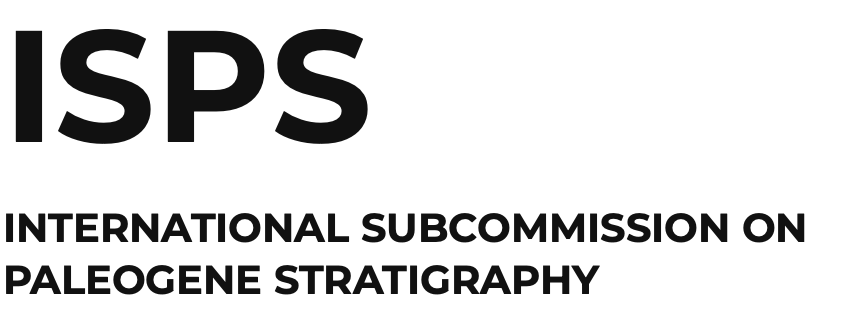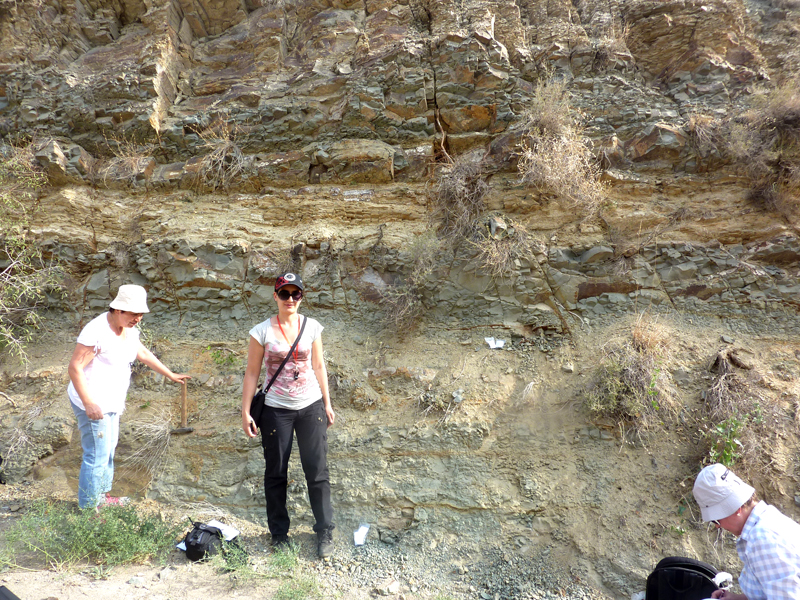The main goal of the International Geological Field trip in Armenia held between 24 August and 8 September, 2014, was the revision of stratigraphically important larger benthic foraminifera (LBF), planktonic foraminifera (PF) and nannofossil datums in accordance with modern view on their taxonomy and biostratigraphic importance, along with obtaining of new sedimentological and magnitostratigraphic results at the Priabonian/Rupelian and, possibly, Bartonian/Priabonian boundaries. Such an integrated study can provide better understanding of the character of bioevents at these boundaries and estimate the possible diachroneity in the occurrence of PF zonal markers. Possibly, this new work will appear useful for analysis of criteria of the Bartonian boundaries.
In the Paleogene, Armenia had the transitional paleogeographic position between Peritethyan and Tethyan areas. The Paleogene stratigraphic scale, compiled in the last century introduced the correlation of tropical PF zones (Blow 1969) with the Crimean-Caucasian regional zones. Starting the middle Eocene, Tethyan taxa dominate the Armenian foraminiferal assemblages, that is why the standard zones can be reliably identified for Bartonian–Rupelian sections of this region. The Bartonian-Priabonian LBF from the Armenian sections were included in SBZ zonation (Serra-Kiel & al. 1998). The alternation of shallow- and deep-water deposits in many sections provides a good correlation between “planktonic” and “benthic” zonations. Moreover, the occurrence of tuffaceous material in sedimentary rocks may be useful for magnetostratigraphic investigations. The integrated biostratigraphic study of all known sections was made in the1980’s. However, taking into consideration the recent changes in the concepts of stage and foraminiferal standard zone boundaries, the new approach to the Paleogene zone and stage boundaries of the Armenian sections should be applied. This field trip is aimed as an introduction to this poorly known for international geological society region and possibility of multidisciplinary re-study of the Armenian sections.
The brief descriptions of the most typical upper Paleogene sections from different sedimentary areas of Armenia were given in the guide book prepared by the hosts of the Field Trip: E Zakrevskaya (Vernadsky State Geological Museum, Russian Academy of Sciences), E. Shcherbinina (Geological Institute, Russian Academy of Sciences) and F. Hayrapetyan (Institute of Geological Sciences, National Academy of Sciences of Armenia).
The most complete middle-upper Eocene and Oligocene sections, represented by tuffaceous sedimentary rocks with diverse and abundant microfossils, have been observed in Erevan-Vedi and Yekhegnadsor Sinclinoriums of Southern Armenia, within the Arax region.

The field trip was made possible thanks to the generosity and skills of our colleagues of the Institute of Geological Sciences, Armenian National Academy of Sciences (ANAS: Yerevan, Armenia), the Vernadsky State Geological Museum and the Geological Institute, from the Russian Academy of Sciences (RAS: Moscow, Russia). The organizing commettee included, from Armenia: Khachatur Meliksetian (ANAS, Deputy Director for Science), Flora Hayrapetyan (ANAS, Research fellow, Laboratory of Paleontology), Ara Grigoryan (ANAS, Head of Laboratory of Paleontology) and Hektor Babayan (ANAS, Adviser to Director of IGS NAS); from Russia: Elena Zakrevskaya (RAS, Leading Scientist at the Vernadsky State Geological Museum), and Ekaterina Shcherbinina (RAS, Leading Scientist at the Geological Institute).
Sponsor organizations:
- The International Subcommission on Paleogene Stratigraphy (ISPS)
- Party “Just Russia”, Russian Federation
PROGRAM
August 24 – Arrival in Yerevan.
August 25 – Registration of participants at the Institute of Geological Sciences of Armenia (IGS NAS Armenia).
Presentation “Geological setting of Armenia. Tectonic structures and geological history in Paleogene”.
Presentation “Paleogene of Southern Armenia. Litho-biostratigraphy, the modern condition of zonal microfossil scales. The tasks of field trip”.
Visit to the Geological museum of IGS NAS Armenia.
Sightseeing and Festive dinner in Yerevan.
August 26 – Trip in Vedi.
Field trip to the Urtsadzor section (Ypresian, Lutetian, Priabonian).
August 27 – Field trip to the Urtsadzor section (Bartonian-Priabonian).
Excursion to the Khor Virap monastery.


August 28 – Trip to Shagap.
Field trip to the Shagap section (Bartonian-Rupelian). Return to Vedi.
August 29 – Trip to Shagap.
Field trip to the Shagap section (western profile). Return to Vedi.
August 30 – Trip to Lanjar (Biralu).
Field trip to Lanjar section (Bartonian-Rupelian).
Trip to Yekhegnadzor.
August 31 – Field trip to the Azatek section (Bartonian). Return to Yekhegnadzor.
September 1 – field trip to the Malishka section (Priabonian-Rupelian boundary). Return to Yekhegnadzor.
Trip to Yerevan (with stop in Areni).
September 2 – Trip to Azat.
Field trip to the Azat sections (Bartonian-Priabonian, Rupelian). Return to Yerevan.
September 3 – Institute of Geological Sciences of Armenia (IGS NAS Armenia). Report of Simonetta Monechi on “The problems of the three GSSPs not yet defined (Bartonian, Prabonian, Chattian) showing the proposed stratotype sections and marker-events”. Discussion on future researches on the Armenian Paleogene.
Excursion to the Garni temple.
September 4 -5 – Field trip for magnetostratigraphic sampling in the Lanjar section (Bartonian/Priabonian /Rupelian).
September 6 -7 – Field trip for magnetostratigraphic sampling in the Shagap section (Priabonian/Rupelian).
September 8 – Field trip for magnetostratigraphic sampling in the Azat section (Bartonian/Priabonian).
PARTICIPANTS
Laura Cotton – Naturalis Biodiversity Center, Leiden, The Netherlands
Simonetta Monechi – Dipartimento di Science della Terra, University of Florence, Florence, Italy
Cesare Andrea Papazzoni – Dipartimento di Scienze Chimiche e Geologiche, University of Modena and Reggio Emilia, Modena, Italy
Paul Pearson – School of Earth, Ocean and Planetary Sciences, Cardiff University, Cardiff, UK
Anatoly Razumovskiy – Geological Institute, Russian Academy of Sciences, Russia
Arsen Israelyan – Institute of Geological Sciences, Armenian National Academy of Sciences, Yerevan, Armenia
Annique van der Boon – Department of Earth Sciences, Utrecht University, Utrecht, The Netherlands
György Less – Institute of Mineralogy and Geology, University of Miskolc, Miskolc-Egyetemváros, Hungary
Willem Renema – Naturalis Biodiversity Center, Leiden, The Netherlands
Vladimir Aleksandrovich Musatov – Nizhnevolzhsky Geology and Geophysics Research Institute, Saratov, Russia
Olga Nikolaevna Vasilyeva – Zavaritsky Institute of Geology and Geochemistry, Ural Branch of the Russian Academy of Sciences, Ekaterinburg, Russia
FUTURE WORK
Among the sections visited, several seem to be very promising. Two of them (Utrsadzor and Maliska) have been sampled and investigated in most detail for the Bartonian and Priabonian transition, and for the extinction events of large foraminifera. A joint paper on the integrated stratigraphy of this time interval will be produced soon.
Simonetta Monechi


